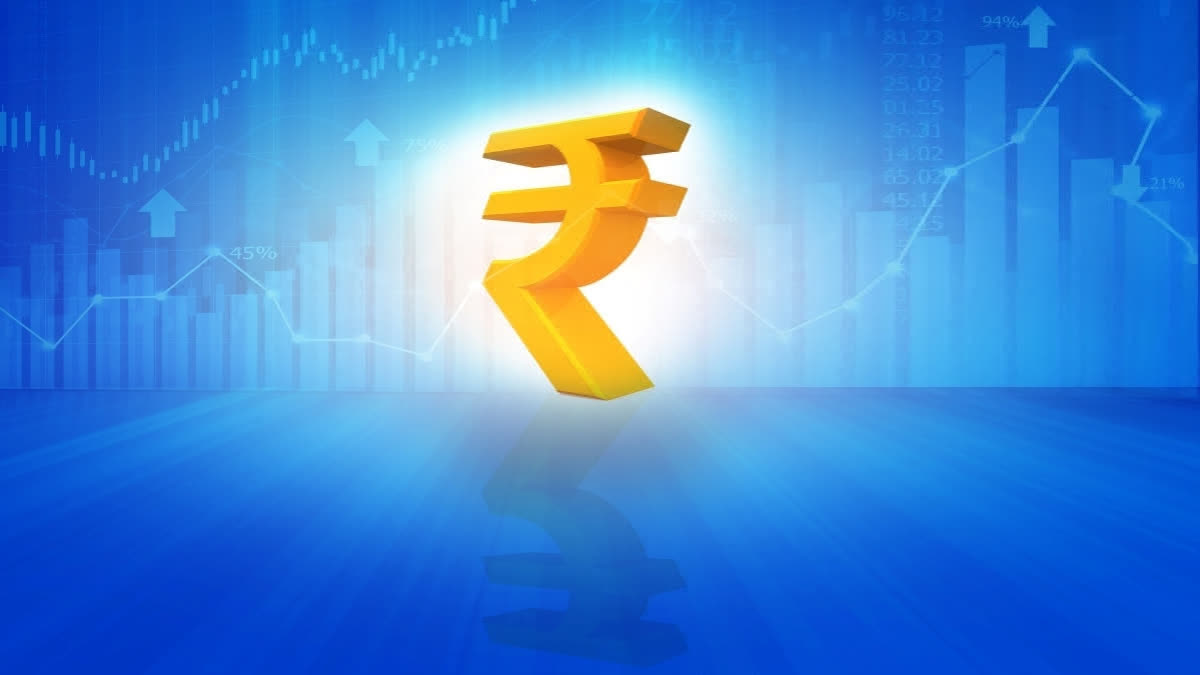New Delhi: The ongoing depreciation of the rupee has posed a significant challenge to the country's economy, raising import bill and simultaneously limiting the benefits of exports. Emphasising the need for urgent policy changes, experts have suggested that the government must incorporate measures in the budget to stabilise the Indian currency.
As per latest research by Global Trade Research Initiative (GTRI), rupee has tumbled by 4.71% against the US dollar in just one year, thereby inflating the nation’s import bill and sparking fresh economic challenges. The depreciation is driving up costs for essential imports like crude oil, gold and electronics, putting up additional pressure of the economy which is already grappling with inflation.
While it is often believed that a weaker currency helps boost exports, India’s data over the past decade paints a different picture. Import-heavy industries are doing well, while sectors like textiles, which rely less on imports and are more labour-intensive, are facing challenges. As the rupee continues to fall, India is left with an important question: how can it turn this currency weakness into a strategic advantage?
Rupee Depreciated 41.3% In Ten Years
As per the data since January 16 last year, the Indian Rupee has weakened by 4.71% against the US dollar, falling from Rs 82.8 to Rs 86.7. In last 10 years, between January 2015 and 2025, the INR has weakened by 41.3% against the US dollar, falling from Rs 61.4 to Rs 86.7. The weaker rupee will increase India’s import bill led by high payments for crude oil, coal, vegetable oil, gold, diamonds, electronics, machinery, plastics and chemicals.
The weaker rupee is the price in addition to commodity price rise. For example, the weaker rupee will increase India’s gold import bill, especially as global gold prices have jumped 31.25%, rising from $65,877 per kg in January 2024 to $86,464 per kg in January 2025. India’s oil imports, which are mostly priced in dollars, could have been much costlier due to the rupee's depreciation. However, the impact was limited as Brent crude prices rose only slightly by 1.4%, from $80.12 per barrel in January 2024 to $81.23 per barrel in January 2025.
Overall, weaker INR will inflate import bills, raise energy and input prices, leading to overheated economy. The export data of last ten years suggests that weak INR does not help exports contrary to what economist say.
The report analyses that between 2015 and 2025, the Indian Rupee (INR) weakened by 41.3% against the US dollar, falling from Rs 61.4 to Rs 86.7. While economists believe currency depreciation should make exports more competitive, India’s experience shows that rising input costs and inflation often negate these benefits.
Impact Of Weaker Rupee
For sectors relying heavily on imports, a weaker rupee increases input costs, reducing competitiveness. Theoretically, sectors with low import dependence, like textiles, should gain the most from a weaker rupee, while high-import sectors like electronics should benefit the least. However, trade data from 2014 to 2024 tells a different story.
During 2014 to 2024 period, overall merchandise exports grew by 39%, but high-import sectors like electronics, machinery, and computers saw much higher growth. Electronics exports surged by 232.8%, and machinery and computer exports grew by 152.4%. Chemicals, pharmaceuticals, and automobiles, all with significant import content, also performed strongly. Meanwhile, low-import sectors like textiles and clothing experienced negative growth, even though the weaker rupee should have made their goods more competitive globally.
What Experts Said
Speaking to ETV Bharat, Professor Seema Sharma, an economist from IIT Delhi, said that the current level of the rupee is expected to become the new normal. She explained that the rupee’s depreciation is not a result of India’s economic conditions, but rather an outcome of stronger dollar and various other global factors. She also expressed optimism that the Reserve Bank of India (RBI) is closely monitoring the situation and will take action to check further depreciation of the rupee.
Chief Economist at Bank of Baroda, Madan Sabnavis, also expects the rupee to remain at these levels for a little while longer. He told ETV Bharat that this volatility may continue until there is clarity on the US policy framework. Sabnavis, however, pointed that the RBI is unlikely to intervene soon unless there is a significant decline. According to him, in comparison to other currencies, the rupee's depreciation is at a comfortable level.
On the other hand, founder of GTRI Ajay Srivastava told ETV Bharat that these trends suggest that a weaker rupee doesn’t always boost exports. "It hurts the labour intensive exports most and helps import driven exports with low value add. Higher import costs for items like crude oil, coal, vegetable oil, gold, electronics, and chemicals lead to rising energy costs, inflation, which often cancel out the benefits of currency depreciation. India’s high raw material, industrial power, capital and logistics costs makes the situation worse," highlighted Srivastava.
He also suggested that to ensure long-term economic stability, India must balance growth with inflation control and rethink its rupee management and trade policies. "Boosting exports can increase dollar inflows, easing pressure on the rupee. Reducing energy imports through domestic oil exploration and promoting Make in India can lower the import bill and reduce dollar demand," he said.
The GTRI founder further mentioned, "Most of our 600 billion dollar reserves are loans that are to be repaid with interest in a short time. They may not be counted in INR stabilization efforts. The US can print dollars as much as it wants and push these towards countries like India through regular tweaking of its interest rates. Any effort to get a value for INR during such surge periods will hurt in the long run. Till then, we may have to wait to see how long the US can carry on with the $36 trillion gross federal debt and 124% debt to GDP ratio."
